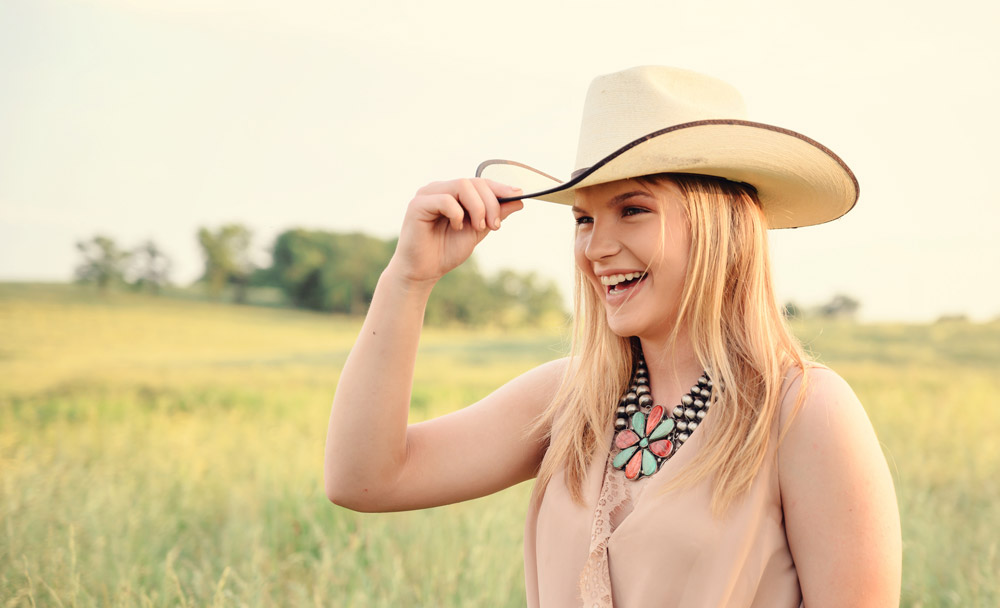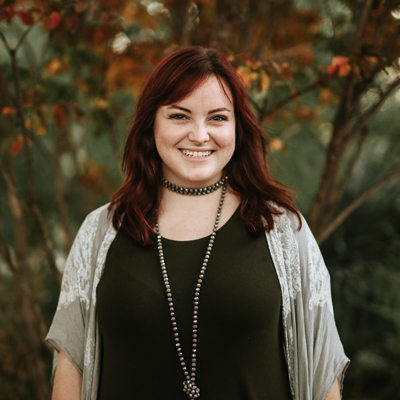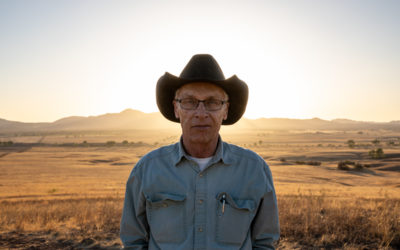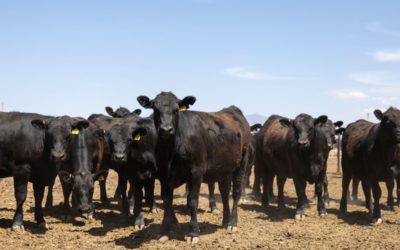
Champions on the hoof and under the hide
Alexis “Lexi” Koelling has been pulling a heifer around since she was three. Now 15, she’s no stranger to the winner’s circle, but you wouldn’t know by talking to her.
You’d have to prod her a bit to find out she won Grand Champion in both the carcass steer and bred-and-owned carcass steer at the National Junior Angus Show this summer. It’s her 5th year in that competition, her second bred-and-owned.
Lexi only talks of how much she enjoys working with cattle alongside her family. Her mother and stepfather Michele and Brock Meyer own Meyer Cattle Company at Curryville, Mo., with 400 commercial cows and another 200 registered Angus. Brock’s father runs a feedyard nearby where they all pitch in. Lexi grew up watching and learning.
“She’s really developed her cattle sense and is just as helpful as many adults that have been around cattle their entire life,” Michele says. “It’s what makes her unique, I think.”
Lexi can work hair, take care of the show barn, hold the halter at the National Roll of Victory backdrops, yet work and breed cows like a veteran.
The carcass contest rounds out her experience.

“It’s what we do on the commercial side,” Michele says. “Brock and I also feel it’s important for her to have a balance – to know how to take care of her show cattle and carcass steers and be successful in both areas.”
She entered three steers, figuring the heaviest would win. When a lighter one took home the trophy, Lexi learned what many do on their first try at retained ownership: on the hoof, you can’t tell what’s under the hide.
She said the hardest part was waiting, unlike the live show, “where you’re thinking, ‘Oh, I’m so excited to see how I do—’ you’ve got to sit back and wait. How good are they actually going to grade?”
When the wait was over, Lexi “learned about carcass quality and how they graded higher on not just marbling fat, but as much retail product on the carcass.”
Her champion steer was a Certified Angus Beef ® (CAB®) brand Prime, Yield Grade 3 carcass weighing 841 lb. with a backfat thickness of half an inch and a ribeye area of 13 inches, all slightly above contest average. The steer earned $227 in carcass premiums on the contest grid, $5 better than second place.

In the whole process, she’s taken an in-depth look at breeding tools like expected progeny differences (EPDs), marbling scores, loin and ribeye size, and feeding schedules.
“I didn’t know as much about what was going through the calves and the importance of it before this contest,” Lexi says. “Learning about CAB and the different specs and what can grow the carcass really helped me learn what’s important about feed going in, and the end-product.”
Knowing more, she decided to trade volleyball for more time and focus on cattle, 4-H and FFA this year.
Though just a sophomore, she already plans to attend Oklahoma State University to major in animal science or ag business, make the livestock judging team and graduate to take a sales job before returning to the family operation.
It’s a career she’s been preparing for since she was three.
Talk to you soon,
Abbie

About the author: Abbie Burnett
I grew up among the cotton fields of Texas, loving God, my family and a camera in my hand. As a 2018 graduate from Texas Tech, I jumped at the chance to be a CAB storyteller because I know it’s the farmers and ranchers who have the greatest stories to tell. I look forward to meeting you and telling your story while snapping a few (OK, maybe a lot) of sunset pictures along the way!
you may also like
Like Father, Like Daughter
For Hands, there’s no short answer to anything. Problems are approached with thoughtful consideration to every possible outcome. Solutions are executed with care. It’s more than a suggestion on how to treat everything from people to cattle to equipment, it’s simply the Triangle H way. They work to be the best in everything they do – a mindset that he’s passing on to his daughter.
Prime of his life
Ross Humphreys’ adept gait tells of many days in and out of the saddle checking his herd, fence lines, water tanks, and grass availability. Yet at 72, he can still drop down and roll under the barbed wire fence quicker than most men half his age. But Humphreys is not your typical cowboy. He’s a chemist, book publisher, family guy, conservationist, and rancher.
Arizona commercial cattleman awarded for commitment to excellence
Grit in every venture makes Ross Humphreys a successful businessman, and his unrattled spirit makes the best of challenges. However, it’s his relentless drive for raising high-quality beef that earned him the Certified Angus Beef 2021 Commercial Commitment to Excellence Award.



